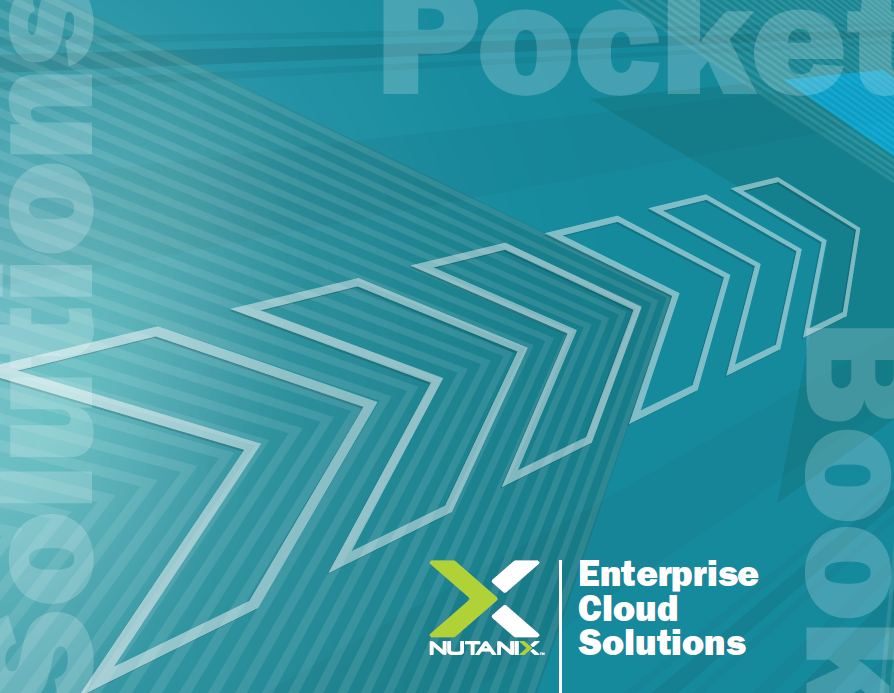Our 5-minute guide to enterprise cloud computing
What is enterprise cloud computing, how is it used, and what are the business benefits?


Enterprise cloud spending is on the rise, with 86% of enterprises now deploying cloud-based tools according to a recent study. This figure is forecast to continue rising throughout 2020, making it crucial that business leaders understand how cloud computing can be used to help companies achieve their business goals.
What is enterprise cloud computing?
Enterprise cloud computing pulls a combination of characteristics from both the public and private cloud, which allows it to adapt to the needs of the business. With this, companies get flexible and agile infrastructure, as well as a choice of where to run workloads.
The growth of enterprise cloud computing has been driven by several forces. Web-scale technologies and hyperconverged infrastructure (HCI) are growing in popularity, replacing traditional IT infrastructure as companies look for ways to handle larger data requests and workloads. But on the other side, managers, developers and staff are demanding the simplicity and self-service that cloud offers. Many IT teams are now looking for a way to support cloud applications alongside existing enterprise apps.
Enterprise clouds are built with similar web-scale technologies that enable the same availability, reliability, and durability as the public cloud. This is different from public clouds offered by companies like AWS and Microsoft Azure, as for the most part with these clouds, the data sits outside your data centre, and the applications have to conform to their providers' processes and architectures.
By contrast, enterprise cloud computing allows businesses to get the best of both worlds: a public cloud experience in your own data centre that lets you choose the most appropriate technology for the business, but where workloads and data can be managed in the public cloud when necessary.
There are five key components to enterprise cloud computing:
- Full-stack infrastructure and platform services that deliver turnkey infrastructure for any app at any scale, anywhere, delivered through a combination of public cloud services and on-premises data centres
- Zero-click operations and machine intelligence that deliver operational simplicity through automation
- Instant elastic consumption that allows businesses to buy and use only the IT resources they need, when they need them, eliminating overprovisioning and prediction risk
- Integrated security and control that makes use of automation, simplifies security maintenance using automation, and covers the entire infrastructure stack
- Application-centric mobility that lets businesses run applications anywhere with no infrastructure lock-in
Despite its name, enterprise cloud computing is not just for enterprises. Any company that wants to get the best of public and private cloud can customise an enterprise cloud to meet the requirements of both existing and next-generation applications, meaning they get the same cloud benefits, regardless of their organisation's size.
Get the ITPro daily newsletter
Sign up today and you will receive a free copy of our Future Focus 2025 report - the leading guidance on AI, cybersecurity and other IT challenges as per 700+ senior executives
Common enterprise cloud computing use-cases
Companies of all types in a wide array of industries are adopting enterprise cloud computing, including those in retail, healthcare, manufacturing and financial services.
Within enterprises, IT departments looking to modernise their data centres while also harnessing the cloud's benefits is driving adoption. Enterprise cloud computing brings the flexibility and agility of the cloud, along with the security and control provided within a data centre a win-win situation.
Some business and app owners are adopting the enterprise cloud to allow them to quickly take their products to market, without delays from IT.
Pros and cons of enterprise cloud computing
The primary advantage of enterprise cloud computing is that it uses the best aspects of both the public and private clouds. With enterprise cloud computing, businesses have the capability to use platform services and IT infrastructure that deliver the advantage of public cloud services for enterprise applications, but without compromising on the value provided by private data centres. It offers superior speed and performance, as well as lower infrastructure costs and more efficient use of IT resources.
This also presents cost savings. By adopting the pay-as-you-go characteristics of the public cloud while providing a common foundation to run legacy and new applications on, businesses can have the infrastructure and services they need, without wastage or shortages.
RELATED RESOURCE

Your enterprise cloud solutions guide
Infrastructure designed to meet your company's IT needs for next-generation cloud applications
Bottlenecks that typically occur with the configuration, expansion and replacement of traditional on-premise IT systems and components can also be eliminated, with responsibility passed to the vendor. IT department resources are subsequently untied, with the released fluidity available to be channelled towards other initiatives.
In terms of security, enterprise cloud computing resides behind a firewall which acts as a buffer to threats. Cloud technology provides virtual servers which deflect from damaging on-site attacks on physical storage devices. Perhaps most importantly, enterprise cloud computing enables flexible security policies, allowing organisations the ability to base security decisions on factors such as a user's role within an enterprise, locations, type of data, and so on.
However, there are also some downsides. Pricing models can be difficult to interpret, and as with many cloud services, there is often confusion over ownership within an organisation. Although enterprise cloud computing gives much greater control over security and access, there are still valid concerns around data security whenever data is sent into the cloud, there is always a risk.
How to get started with enterprise cloud computing
Regarding IT processes and infrastructure, the best place to start is by looking at the current IT replacement cycle. Rather than worrying about running out of capacity during the cycle and having to make out-of-cycle purchases, enterprise cloud and hyperconverged infrastructure instead has a just-in-time approach, ensuring that capacity isn't wasted.
For a long time, businesses have had to hire specialists for each new area of IT infrastructure, but enterprise cloud systems supported by hyperconverged infrastructure doesn't require specialists to operate. A business only needs IT professionals with a wide breadth of knowledge to get started with enterprise cloud computing. These IT generalists are the future of data centre support, as they can simplify a complex mass of technology in the data centre and can also help shift IT's focus from infrastructure to aiding the bottom line.
RELATED RESOURCE

Your enterprise cloud solutions guide
Infrastructure designed to meet your company's IT needs for next-generation cloud applications
What makes adopting enterprise cloud computing so attractive is that a single vendor takes autonomous control over all the sub-sections, ensuring scalability and simple migrations. Previously, a strong barrier to adoption was that many applications and services would be siloed, with multiple vendors unable to smoothly co-exist.
Whilst different vendors offer similar fundamental packages, some packages do slightly vary, offering useful bonuses such as 24/7 help-desks and additional security barriers. Look out for vendors who themselves have a technology partner. Microsoft has teamed up with several firms, permitting them use of its public cloud. New Signature was named Microsoft partner of the year for 2019, and has a relationship with the software firm Turbonomic; together, they have built an intelligent rightsizing optimisation tool into the cost of managed services.
-
 Bigger salaries, more burnout: Is the CISO role in crisis?
Bigger salaries, more burnout: Is the CISO role in crisis?In-depth CISOs are more stressed than ever before – but why is this and what can be done?
By Kate O'Flaherty Published
-
 Cheap cyber crime kits can be bought on the dark web for less than $25
Cheap cyber crime kits can be bought on the dark web for less than $25News Research from NordVPN shows phishing kits are now widely available on the dark web and via messaging apps like Telegram, and are often selling for less than $25.
By Emma Woollacott Published